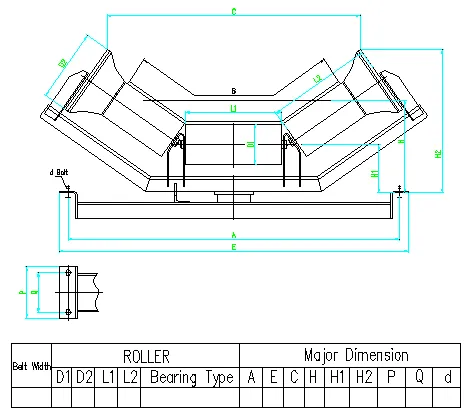 Afrikaans
Afrikaans  Albanian
Albanian  Amharic
Amharic  Arabic
Arabic  Armenian
Armenian  Azerbaijani
Azerbaijani  Basque
Basque  Belarusian
Belarusian  Bengali
Bengali  Bosnian
Bosnian  Bulgarian
Bulgarian  Catalan
Catalan  Cebuano
Cebuano  Corsican
Corsican  Croatian
Croatian  Czech
Czech  Danish
Danish  Dutch
Dutch  English
English  Esperanto
Esperanto  Estonian
Estonian  Finnish
Finnish  French
French  Frisian
Frisian  Galician
Galician  Georgian
Georgian  German
German  Greek
Greek  Gujarati
Gujarati  Haitian Creole
Haitian Creole  hausa
hausa  hawaiian
hawaiian  Hebrew
Hebrew  Hindi
Hindi  Miao
Miao  Hungarian
Hungarian  Icelandic
Icelandic  igbo
igbo  Indonesian
Indonesian  irish
irish  Italian
Italian  Japanese
Japanese  Javanese
Javanese  Kannada
Kannada  kazakh
kazakh  Khmer
Khmer  Rwandese
Rwandese  Korean
Korean  Kurdish
Kurdish  Kyrgyz
Kyrgyz  Lao
Lao  Latin
Latin  Latvian
Latvian  Lithuanian
Lithuanian  Luxembourgish
Luxembourgish  Macedonian
Macedonian  Malgashi
Malgashi  Malay
Malay  Malayalam
Malayalam  Maltese
Maltese  Maori
Maori  Marathi
Marathi  Mongolian
Mongolian  Myanmar
Myanmar  Nepali
Nepali  Norwegian
Norwegian  Norwegian
Norwegian  Occitan
Occitan  Pashto
Pashto  Persian
Persian  Polish
Polish  Portuguese
Portuguese  Punjabi
Punjabi  Romanian
Romanian  Russian
Russian  Samoan
Samoan  Scottish Gaelic
Scottish Gaelic  Serbian
Serbian  Sesotho
Sesotho  Shona
Shona  Sindhi
Sindhi  Sinhala
Sinhala  Slovak
Slovak  Slovenian
Slovenian  Somali
Somali  Spanish
Spanish  Sundanese
Sundanese  Swahili
Swahili  Swedish
Swedish  Tagalog
Tagalog  Tajik
Tajik  Tamil
Tamil  Tatar
Tatar  Telugu
Telugu  Thai
Thai  Turkish
Turkish  Turkmen
Turkmen  Ukrainian
Ukrainian  Urdu
Urdu  Uighur
Uighur  Uzbek
Uzbek  Vietnamese
Vietnamese  Welsh
Welsh  Bantu
Bantu  Yiddish
Yiddish  Yoruba
Yoruba  Zulu
Zulu belt conveyor idler types
Understanding Belt Conveyor Idler Types
Belt conveyors are an essential part of material handling in various industries, including mining, manufacturing, and logistics. One critical component of these conveyors is the idler. Idlers support the belt and help it maintain its shape and alignment during operation. There are several types of belt conveyor idlers, each designed for specific applications and conditions. In this article, we will explore the different types of belt conveyor idlers and their unique features.
1. Carrier Idlers
Carrier idlers are the most common type found on belt conveyors. They support the weight of the load being transported and are usually placed in a series along the length of the conveyor. Carrier idlers are typically available in different configurations, such as flat or trough-shaped. Trough idlers are advantageous as they help contain the material on the belt, reducing spillage and improving load stability. Carrier idlers can also be designed with various rolling elements, including rubber, steel, or plastic, depending on the application’s specific demands.
2. Return Idlers
Return idlers play a significant role in ensuring the smooth operation of the conveyor belt. These idlers support the empty belt as it returns from the discharge point back to the loading point. Return idlers help maintain belt tension and avoid sagging, which can lead to increased wear and damage. Similar to carrier idlers, return idlers can be flat or trough-shaped; however, they are generally less robust than carrier idlers, as they do not carry the load.
Impact idlers are designed to absorb the shock and impact of heavy loads dropping onto the belt during loading. These idlers are usually placed at loading points and constructed with additional cushioning to minimize the risk of damage to both the belt and the idlers themselves. Impact idlers are a critical component in operations where materials are loaded with significant force, contributing to the longevity and efficiency of the conveyor system.
belt conveyor idler types

4. Training Idlers
Training idlers, also known as aligning idlers, are crucial for maintaining proper belt alignment during operation. Misalignment can lead to increased wear on the belt, spillage of materials, and decreased efficiency. Training idlers are equipped with a mechanism that allows them to pivot, helping guide the belt back to its intended path. This self-adjusting feature makes them essential in environments where the conveyor system may be subjected to misalignments due to material buildup or wear on the components.
5. Self-cleaning Idlers
In many industrial environments, material buildup on conveyor components can lead to inefficiencies and increased maintenance costs. Self-cleaning idlers are designed to address this issue by featuring a unique design that allows for material to be effectively removed as the belt passes. These idlers are usually equipped with a specific shape or bristles that help dislodge material during operation, ensuring that the idlers remain clear and the system operates smoothly.
6. Specialized Idlers
Apart from the standard types, various specialized idlers cater to unique applications. For example, in environments where extreme temperatures are a concern, heat-resistant idlers might be used. Similarly, idlers made of stainless steel could be utilized in food processing industries to meet stringent hygiene standards. Specialized idlers are tailored to enhance the efficiency and safety of the conveyor system, addressing specific operational challenges.
Conclusion
Belt conveyor idlers are a vital part of the conveyor system, influencing its efficiency, safety, and longevity. Understanding the different types of idlers—their features and applications—enables industries to select the most suitable options for their specific needs. By incorporating the appropriate idlers, businesses can optimize their material handling processes, minimize downtime, and enhance overall productivity. As technology advances, the design and functionality of idlers will continue to evolve, further improving the performance of belt conveyors across various sectors.
-
Revolutionizing Conveyor Reliability with Advanced Rubber Lagging PulleysNewsJul.22,2025
-
Powering Precision and Durability with Expert Manufacturers of Conveyor ComponentsNewsJul.22,2025
-
Optimizing Conveyor Systems with Advanced Conveyor AccessoriesNewsJul.22,2025
-
Maximize Conveyor Efficiency with Quality Conveyor Idler PulleysNewsJul.22,2025
-
Future-Proof Your Conveyor System with High-Performance Polyurethane RollerNewsJul.22,2025
-
Driving Efficiency Forward with Quality Idlers and RollersNewsJul.22,2025





























